Since I’ve started growing microgreens, people have questioned whether growing them is sustainable. Today I’ll look at some of the arguments for this.
Are microgreens sustainable? Microgreens are more sustainable than crops grown to maturity on large industrial farms that use pesticides and chemicals as inputs, and are often transported hundreds of miles to market. You can make microgreens even more sustainable using organic seed, peat-free compost, and responsibly sourced energy.
In this article, I’ll address common concerns that have about the sustainability of microgreens. Particularly from ideological and environmental perspectives.
Are Microgreens Sustainable?

When it comes to microgreens, there are two specific areas that people seem to take issue with.
Some people look at it from an ideological point of view, while others are concerned with the environmental impact of growing them.
The Ideological Argument Against Growing Microgreens
From an ideological perspective, the general idea people have tends to be that it’s a better use of resources to grow food in other ways besides microgreens.
Microgreens are often seen as an expensive, fancy luxury item. The people who are cooking with them tend to be perceived as upscale restaurants.
People who are opposed to microgreens might think it’s a better idea to grow a staple food that feeds the population like potatoes or corn, instead of just a high value expensive food like microgreens instead.
- Read these 30 Of The Best Microgreens Recipes Ideas for inspiration to cook microgreens at home.
Myth: There’s Not Enough Food To Go Around
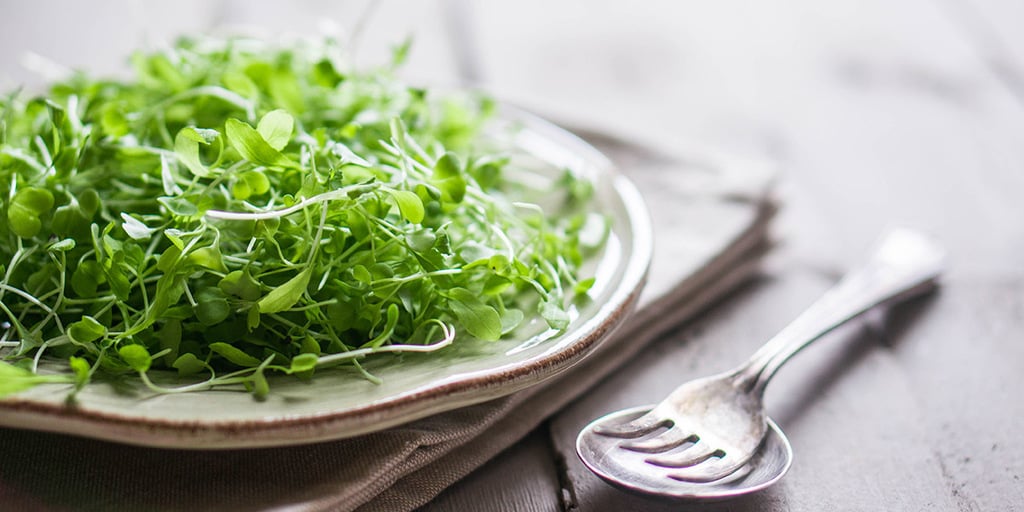
I think the biggest argument against this is the fact that hunger is more a function of inequality and poverty, rather than a case that there isn’t enough food to go around.
We already actually produce enough food on this planet to feed 10 billion people. The food is there, it’s simply just not in the right location.
Currently about 30 to 40% of food that we grow gets wasted under the current systems that are in place. That’s a staggering amount of food waste!
Some of it is lost all along the way, including during harvesting, transport, and also at the point of consumption.
Not very many industries would tolerate waste at that kind of scale. It’s not a case of more staple crops being needed, it’s how the existing food is distributed.
Local food production helps to reduce the problems of transporting food and the waste associated with it.
Myth: Microgreens Take Up Space That Could Be Used For Better Crops
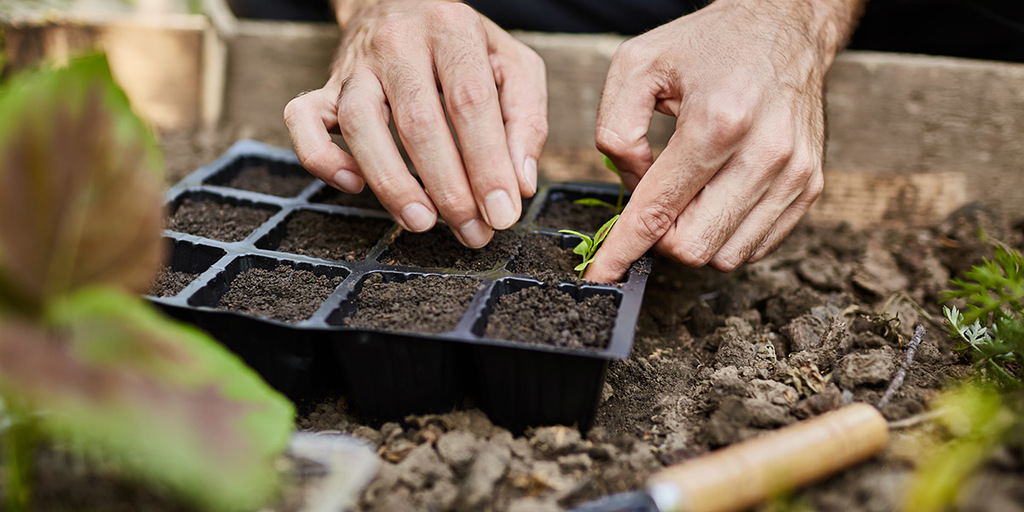
Microgreens don’t really compete with other crops like potatoes, corn, soybeans, peppers, or any other conventionally-grown plant that’s raised to maturity.
Most microgreens are grown either indoors or in poly tunnels in controlled environments, in places that other types of food otherwise couldn’t be produced.
Microgreens are a crop that enable you to increase the amount of available space that you put into food production.
There are many microgreen farms currently located in space that wouldn’t otherwise be possible to use for microgreens production.
Including in underground war shelters in London that have been empty since World War II.
This is just one example of otherwise abandoned locations that have been brought back into a productive state.
- Learn the Main Types of Microgreens and their differences.
Myth: Microgreens Aren’t Sustainable
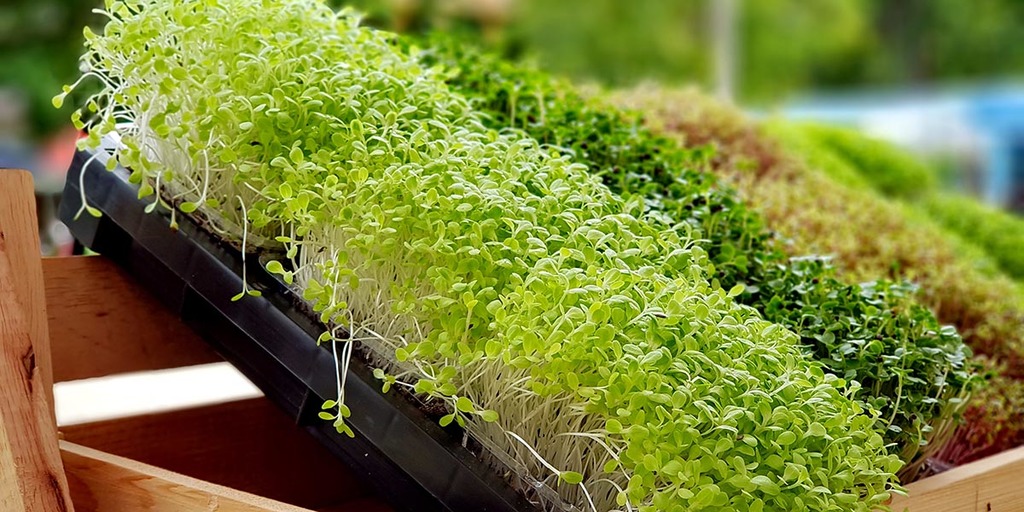
Most of the time, the salad we eat is being brought in from a long distance away. It gets transported to the shop, where someone has to drive to, and then transport it back to their home.
Salads made of fully grown arugula, lettuce, and spinach leaves are heavier and bulkier, so they’re harder to transport.
And since they aren’t as fresh once they get on to the end consumers table, they lose some nutritional value along the way.
Transporting just the seeds to a microgreens farm and them supplying food locally, instead of growing food to maturity far away and then shipping it, helps to increase sustainability.
Summary: The Ideological Aspects of Growing Microgreens
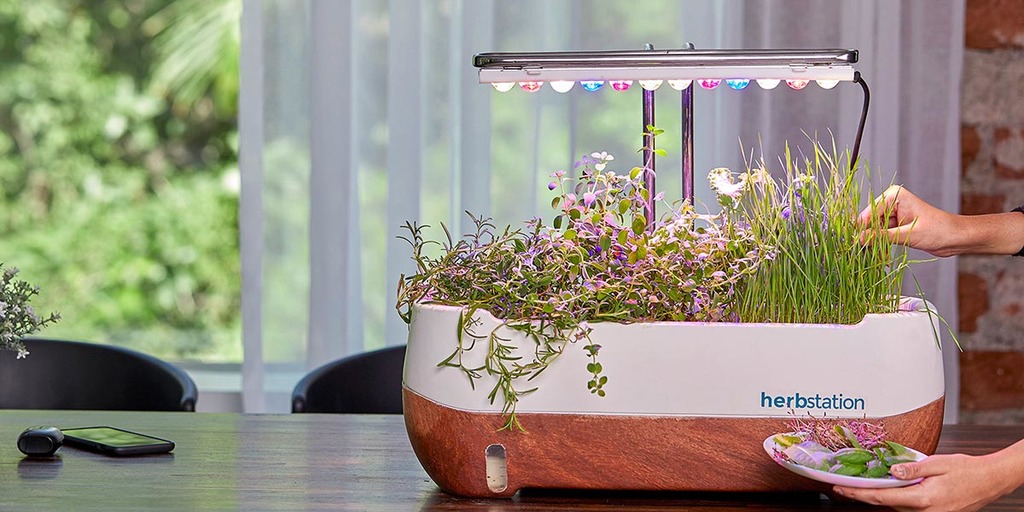
When it comes to growing food, why not grow something that people enjoy? Microgreens are something that are enjoyable to eat and nutritious at the same time.
Consuming food can be a communal activity. It allows you to eat with your family around the dinner table, and get the health benefits of eating good food as well.
I have two young children who I can never get to eat salad, but they go absolutely crazy for microgreens. There’s something to be said about growing food that people enjoy and there’s a demand for.
There’s a reason that chefs want to cook with microgreens. People who come to their restaurant want to eat microgreens too!
In my opinion, only growing food to feed the population is shortsighted. There’s more to food than just satiating people.
It would be a totally different story if people were going hungry because we were growing microgreens instead of something else. But that’s simply not the case.
The Environmental Argument Against Microgreens
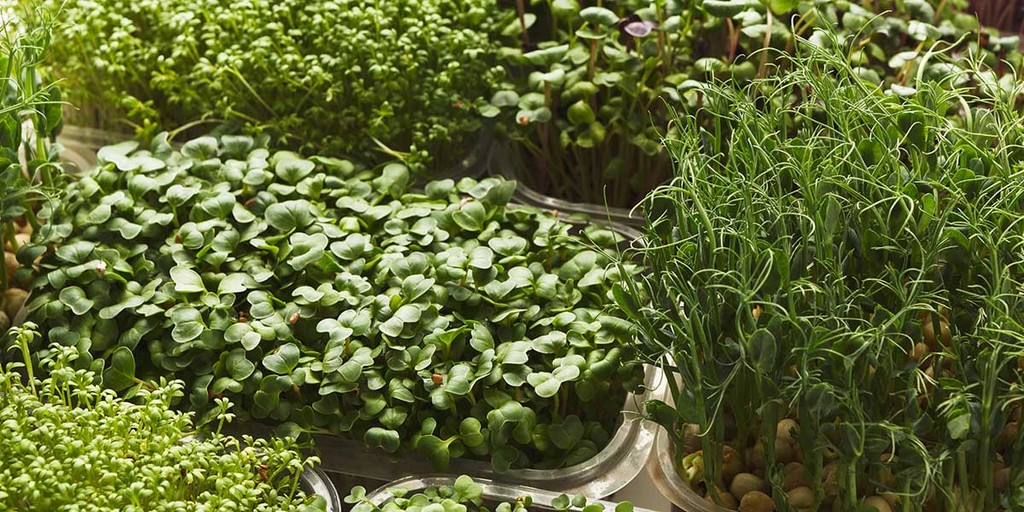
Many people think that microgreens aren’t sustainable simply because they’re a high resource input crop. I’ll admit that when I first learned about microgreens, this is something that I had to take into consideration as well.
But since I started growing them, it’s clear to me that microgreens give back more in terms of nutrition from the inputs than what you could get from any conventionally-grown crop.
Let’s look at some of the major inputs into growing microgreens and see how they compare.
1. Environmental Argument Against Microgreens
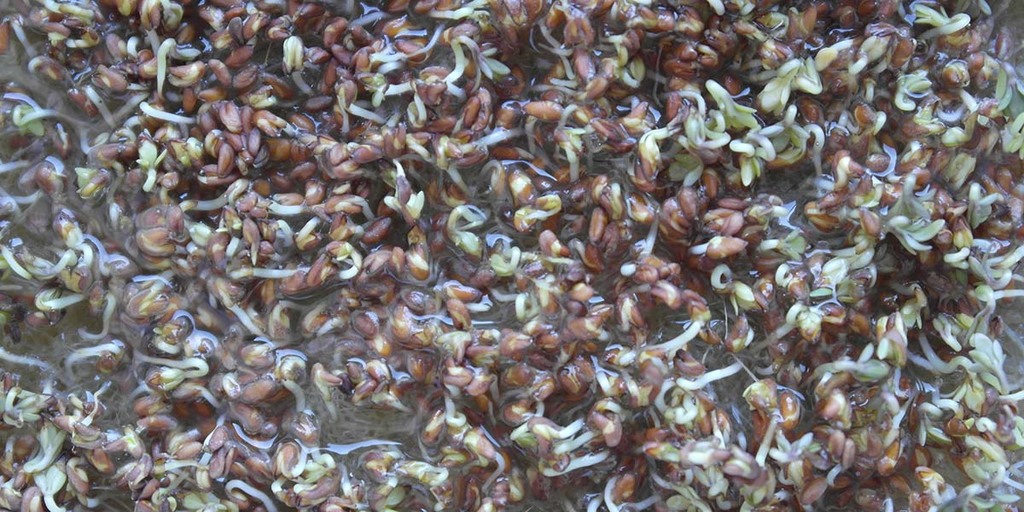
I can definitely understand why people worry about seeds. People have been seed saving and carefully breeding seeds for generations.
By the sheer amount of seeds used in microgreens production, it might seem like a waste.
A seed is quite a magical little thing that can create a whole sunflower or radish plant. So it seems like a waste to only grow them to a few centimeters tall.
With regards to seeds, I think it’s important and relevant to mention some history regarding them. During WWI and WWII, there were a lot of new chemicals that were invented and being produced as part of the war effort.
After the war, chemical companies shifted to using these chemicals to spark a bit of an agricultural revolution.
They began producing both fertilizers and pesticides, and then also moved into creating genetically modified seeds. They designed seeds in a way to give you the perfect fit with the other chemical products that they created.
In my opinion, that’s about as far away from seed saving as you can get! Most conventional farmers now need to buy new seeds every year, and a few large companies are holding all of the skills and knowhow.
It’s very convenient for the company, because their seeds will only grow in the presence of their specific fertilizers and pesticides.
A big part of being a responsible consumer is realizing that, in a way, you vote every time that you buy something.
I feel that microgreens are a better choice than buying products created on large industrial farms with chemicals and pesticides, but that’s just me.
Whenever you grow microgreens, you want to do it sustainably. Definitely steer clear of GMO seeds. Ideally you want to source seed that has been produced under an organic system.
What makes seed unsustainable is if it’s produced in a really intensive system using lots of fertilizer, pesticide, and overall heavy resource input.
Those types of seeds have a larger carbon footprint than those grown organically.
Admittedly microgreens do require quite a lot of seed, which gets densely sown into trays. Microgreens use a lot more seed than you’d ever use in a field-based system. So on the surface this can seem like a huge waste.
That is a reality of microgreens production. But it’s another question as to whether it’s any more sustainable to grow crops conventionally to maturity.
It’s simply not the case that we have any kind of seed shortage or a risk of developing one in the future. If that were the case, then perhaps microgreens would be a less sustainable choice.
But currently, seeds are plentiful and relatively inexpensive, which is an important point to bear in mind.
When it comes to wasting seeds, it’s more of a visceral gut reaction that people have, rather than being based on the facts. Just look at the peas or sweet corn that most people have in their home.
Every individual pea or kernel of corn that we eat are actually seeds that could have been grown into a full-sized plant. The same is true for nuts, quinoa, and many other types of seeds.
It’s not uncommon to have seeds in your diet, but many people are quite used to eating seeds and a bit oblivious to the fact.
In many cases you might already be eating hundreds or thousands of seeds in a meal without a second thought.
Likewise, some people have a problem with the idea that microgreens are only grown to a height of 5 to 10 centimeters, instead of a mature crop reaching its full potential.
Sure, if you let a sunflower grow to maturity, you get a lot more seeds. But there’s also a lot of wasted energy that goes into the biomass of the rest of the sunflower plant which doesn’t go to good use.
As another example, just think of pumpkins. You get an amazing fruit at the end of it, but how much goes into growing the meters of vines of the plant that isn’t eaten?
It’s not the case that growing a plant to maturity automatically maximizes its output.
I’ve said a lot about seeds already, so I’ll just leave you with one of my favorite facts about microgreens. By weight, microgreens hold 4 to 40 times the nutrient value of the fully grown plant.
For me, that’s enough to say that microgreens are a good use of seed.
- Read also 21 Of The Best Small Scale Farming Ideas you can easily realize.
2. Compost
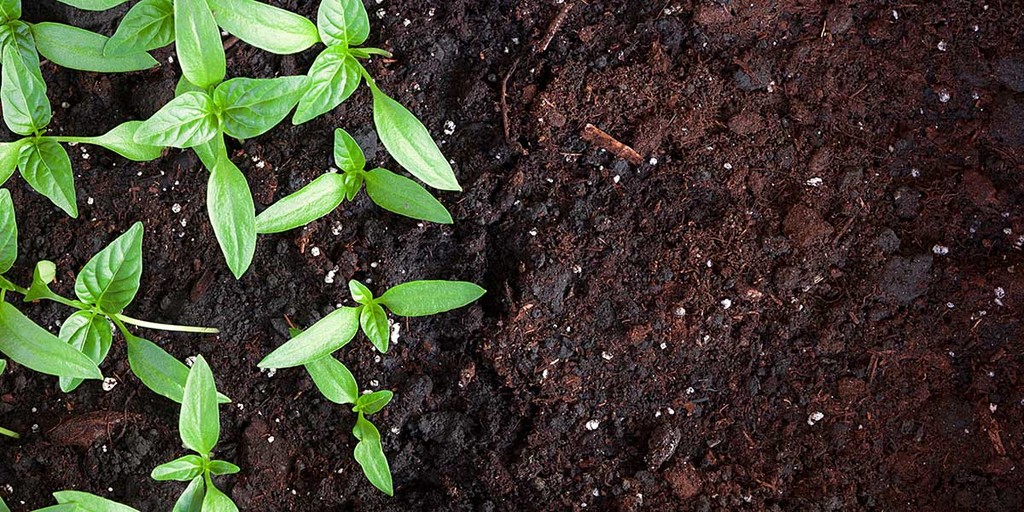
Growing microgreens doesn’t necessarily mean that you have to grow in compost. You can also grow hydroponically or with a few other methods. But on our farm, we do choose to grow in compost.
The biggest thing with using compost is to bear in mind what kind you’re using. Compost is often made using peat, which is a non-renewable resource. It’s not very sustainable.
So on our farm, we only use compost that doesn’t have any peat in it, and we recommend everyone else uses a peat-free compost as well.
Be wary of composts that claim to only contain low amounts of peat, as often it still makes up as much as 75% of the total compost in these products.
Again, vote with what you’re buying and be sure that you’ve done your research. If you’re growing your own microgreens, use peat-free soil.
If you’re buying microgreens from the market, as farmers what kind of compost they are using.
We are also currently experimenting with the spent growing medium from our mushroom operations as compost for our microgreens.
This is still in the early development stages, but we are very eager to see if this will allow us to grow microgreens even more sustainably.
- Read our comparison guide Mushrooms vs Microgreens: Similarities, Differences, and How They Can Work Together to learn more.
3. Water

Water is a very precious resource, and nobody could survive without it.
With my microgreens operations, we use a very precise amount of water for each tray. In fact, you don’t want to use too much water or it can lead to mold and other issues.
That’s a lot different than crops grown outside, where lots of water can go to waste. On field farms you lose a lot of water to evaporation more quickly, and you also end up watering a much larger area than is actually necessary.
With microgreens you can be extremely precise about how much water goes into each tray, and there isn’t a lot of water wastage.
Overall the amount of water used versus nutrient output is a very high ratio with microgreens.
If you’re growing crops outside, you’re very much at the mercy of the weather. It either rains too much, or there’s a dry spell where you have to water.
Microgreens result in less in the way of crop failure, which field crops can experience either due to excess or not enough water.
4. Energy
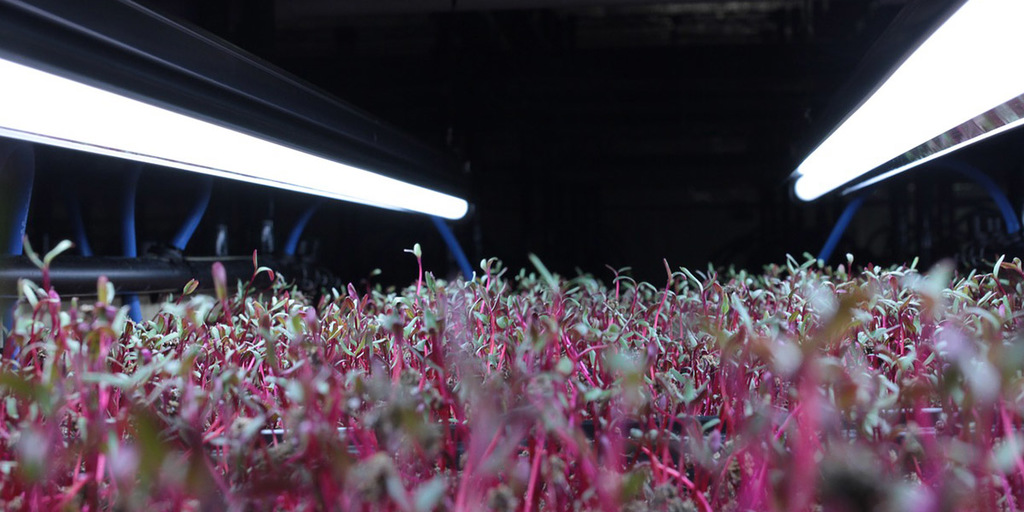
If you think of a microgreens operation, you probably picture them being grown under lights. But the truth is, microgreens don’t need to be grown under lights.
They can be grown outside or in poly tunnels, or even in shipping containers which have had their sides replaced with plastic or glass. No additional lights are needed.
In our microgreens operation, we do have some additional lights to supplement natural sunlight, but it’s not a lot of energy.
To put it into context, it ends up costing us about 1.2 kWh per 1 kilogram of microgreens. That’s the equivalent energy input as cooking using a standard electric oven for about 30 minutes, or running a typical energy-efficient fridge for a day.
If you grow outside and just use sunlight, there’s no energy cost associated at all.
But since we do use some electricity for our microgreens, we have chosen to use a green energy supplier, so a lot of our electricity is coming from sustainable sources like solar or windmills.
Frequently Asked Questions
Q: Can you survive on just microgreens?
A: Microgreens are packed full of vitamins and minerals. Compared to fully grown crops, they contain 4 to 40 times the nutrients. But I wouldn’t recommend a diet that exclusively consists of microgreens.
Just like any food, eat them in moderation and combined with other foods.
Q: Can you eat the root of microgreens?
A: Yes! Since microgreens are only grown for a few weeks at most, the entire plant is tender and edible. You can eat the seed, the sprout, and the root.
Q: Can you use any seed for microgreens?
A: You can use almost any vegetable seed for microgreens, although some taste better than others. Don’t grow microgreens from any non-edible plant, as these may be poisonous or toxic even as microgreens.
Also don’t grow microgreens of plants that you can’t normally eat the leaves of like rhubarb, tomatoes, potatoes, peppers, or eggplant.
Q: What are the healthiest microgreens?
A: All microgreens are packed full of nutrients. But broccoli microgreens arguably pack the most health benefits. Luckily for growers, they’re also some of the least expensive seeds.
Kale, peas, radish, amaranth, and arugula are all healthy picks as well.
Conclusion
The output of growing microgreens is quite clear. You get a beautiful, nutrient-rich, fresh, locally grown crop.
In many cases it can be really difficult to be clear-cut about whether something is a sustainable practice or not.
Especially set against the overall backdrop of the agriculture industry, which is responsible for an enormous amount of CO2 output.
Even though it’s hard to give a yes or no answer as to whether microgreens are sustainable, hopefully I’ve presented the arguments to make you consider that they may be.
There are certainly things you can do all along the process of growing microgreens that add to its sustainability.
For my own microgreens, I use organic seed, peat-free compost, and source my energy supply from a renewable energy source.
Particularly since my microgreens are sold in the local area, I strongly feel that this produce has a net positive impact on the environment and community.
Especially compared against other crops that are grown with fertilizers and pesticides, and then transported hundreds of miles to market.
I feel that anything you can do to take some food production away from the larger industrial supply is a positive thing.
Of course you’ll have to look at all sides and come to your own conclusion, but I hope you’ve found the information I presented here to be useful.
If you’d like to learn more about growing microgreens, read about how to grow them on paper towels!
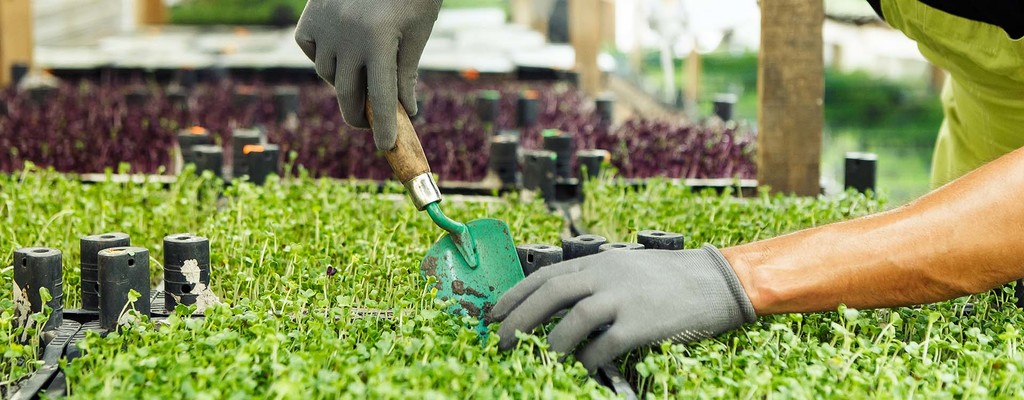
The information is quite useful,Especially the way sustainability of microgreens is covered up.Now it is getting more easier to understand about use,purpose and sustainability of microgreens.
My question wouldn’t be about the micro greens themselves..but if you’re growing seeds to sell for micro greens you have to let the plant mature and presumably you could eat the brocolii before it gives to seed but you have to leave it to go to seed and then collect the seed and tough plant is them inedible so you’ve grown a field of brocolli somewhere to make the seed to grow a tray if tiny brocilli in your house. So you’ve had two growing things for one meal…say you have one broccoli it could make one meal or leave it extra few months it can make 1000 seeds and those 1000 seeds could be micro grown and make one meal….so it hasn’t just taken the few weeks on your windowsill..it has taken the other year of the brocolli mother who had to be fed and watered for a year or sometimes two to produce seeds and the act of making seeds rendered it unusable as food. A bit like how a chicken egg is easier to transport and stays fresh longer than a chicken so is definitely better than a chicken..12 eggs maybe having the same pritien as a chicken…but that chicken has to be fed and homed to make the eggs in the first place. You can’t only count how good the seed is compared to a mature plant but the fact that the seeds contain also the energy of mature plant on top of seed. So if mature plants are less environmentally friendly than micro greens then you have to add that mature plant being unconsumed and further grown to mother the seeds …the seed contains that uneconomical mature crop in it too. Its not separate from its mother crop. Anything I’ve read so far talks about the egg as if independent of the chicken. And the seeds aa if independent from the mature crop.